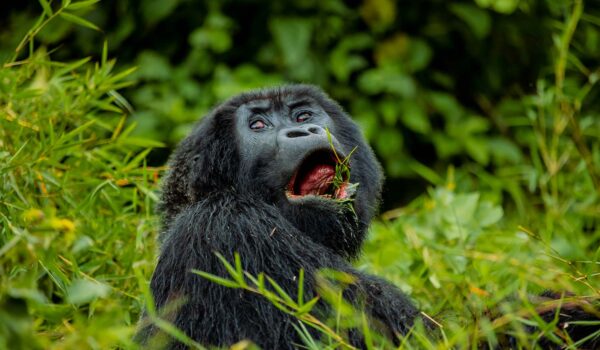Best time to Visit Congo
When to go on safari in the Democratic Republic of the Congo (DRC) mostly depends on the traveler’s choices for weather, animals, and particular activities, such gorilla trekking. For those who like the outdoors and adventure, the Congo is a unique destination because of its tropical temperature, thick rainforests, and abundant wildlife. The wet and dry seasons, however, are the two main determinants of when to go on safari in the Congo, each with unique benefits and difficulties.
Dry Seasons: Optimal Conditions for Safari and Gorilla Trekking
According to many, the greatest times to go on safari in the Congo are during the dry seasons, which run from June to September and again from December to February. Because there is much less rainfall during these months, roads are more accessible and hiking paths are simpler to follow. This is particularly crucial in the untamed areas of Virunga National Park, which is home to the nation’s renowned mountain gorillas. Because there is less foliage during the dry season, visibility is better and there is a greater potential of coming across animals.
Trekking is best done in milder, drier weather since it reduces the possibility of muddy, slippery trails, which may become dangerous during the rainy season. Trekking with mountain gorillas in the Virunga is a highlight of each Congolese safari, and it is easier, safer, and more fun during the dry season. Less rainfall also means fewer mosquitoes, which lowers the danger of mosquito-borne illnesses. This is a significant health benefit for tourists.
Rainy Seasons: A Different, Challenging Perspective
The rainy seasons of the Congo, which run from March to May and October to November, provide a unique combination of chances and problems for safaris. Trekking pathways may become slick and tricky to navigate after heavy rains, making certain locations harder to reach. But for those who are prepared to withstand these circumstances, the rainy season adds a remarkable level of lushness to the Congo’s rainforests, making for an incredibly colorful and picturesque sight.
The forest is bursting with new growth at this period, providing wildlife photographers with an excellent chance to document the lush, thick vegetation in its most striking form. Additionally, less people tend to visit during the rainy season, which might result in a more personal and private safari experience. Sighting wildlife is still feasible, but because of the decreased accessibility and visibility, it could take more perseverance and patience.
Wildlife Behavior and Migratory Patterns
Forest elephants, chimpanzees, okapi, and the critically endangered mountain gorillas are among the many animals that make their home in Congo’s varied environments. Although wildlife is visible all year round, during the dry seasons when animals congregate around water sources, certain behaviors and movements may be more predictable, making for great watching opportunities. Although they live in the park all year round, the Virunga Mountain gorillas are more accessible to trekking parties during the dry season because they prefer to live at lower elevations.
The dry season is also beneficial for tourists who want to see other species, including the lowland gorillas in Kahuzi-Biega National Park. Although lowland gorillas are often found in less hilly areas than their mountain counterparts, dry weather nevertheless makes tracks easier to follow and sightings more satisfying. It is safer and easier to follow gorillas and other animals during these months, making it possible to have an uninterrupted and engaging adventure in the Congolese jungle.
Practical Considerations and Planning
It is crucial to take into consideration the Congo’s inadequate infrastructure while organizing a safari there. Rain-related delays and cancellations are less common during the dry season, making travel and transportation arrangements much simpler to handle. Additionally, the dry season’s temperature is often more pleasant, cooler, and less humid, which improves the safari experience overall.
Because certain parts of the DRC might be turbulent, travelers should also take the political and security situation in the area into account. Choosing trustworthy, knowledgeable tour operators and keeping up with the latest safety regulations will help guarantee a fun and safe trip. Additionally, particularly if coming during the rainy season, tourists should plan for immunizations and bring the necessary health measures, such as malaria protection.
In conclusion, the dry seasons of June through September and December through February are the ideal times to go on safari in the Congo. Particularly for the well-liked gorilla trekking experiences in Virunga and Kahuzi-Biega National Parks, these months provide safer hiking conditions, better weather, and easier access to wildlife regions. Though it presents more physical obstacles, the rainy season provides an option for those looking for less people and a beautiful, green setting. The decision ultimately comes down to the priorities of the tourist, whether those objectives are the best circumstances for hiking and animal watching or the unadulterated beauty of the Congo’s rainforests in full bloom.

